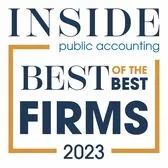Blake Christian, Tax Partner, Alejandra Lopez, Tax Manager and Abi Yanke, Staff Accountant
The long-awaited second set of Proposed Opportunity Zone (OZ) Regulations (New Regulations) were finally released on April 17th. Two days after the personal tax deadline, one day before the equally anticipated Mueller Report, and 14 months after the passage of IRC Section 1400Z as part of the Jobs Cut and Tax Act in December 2017.
For those readers not familiar with the OZ program, please read: insights-alerts-Qualified-Opportunity-Zone-Program.html
Although it did not address every open issue the OZ community has been waiting for, the New Regulations do add clarity in a variety of areas, including but not limited to the following items:
- According to the New Regulations, the “original use” of tangible property acquired by purchase of any person commences on the date when that person or a prior owner/ lessee first placed the property in service in the QOZ for purposes of depreciation or amortization.
- The New Regulations clarify that raw land is not required to be “substantially improved” (e.g., capital improvements equal to 100% of original basis within 30 months).
- With respect to the “substantial improved” requirement for used tangible personal assets (e.g., non-real estate), including those used in an existing business, the New Regulations take a somewhat restrictive view and require that the “substantial improved” test be applied on an asset-by-asset basis, rather than on an aggregate basis. This will complicate the relocation or purchase of an operating business into an OZ.
- The Treasury Department and the IRS are proposing that if a building or other structure has been vacant for at least five continuous years prior to being purchased by a QOF or QOZ Business, the purchased building or structure will satisfy the “original use” requirement without the need for “substantially improving” the property.
- The Tranche II Regulations now defines “substantially all” with the following terms:
- The term “substantially all” threshold is 70% for the “use in an OZ” threshold.
- The term “substantially all” threshold is also 70% for the tangible property “owned or leased” that must be qualified OZ property for a business to be a QOZ Business.
- The term “substantially all” threshold is 90% when used to measure a QOF’s holding period of tangible property as qualified OZ business property, QOZ partnership or corporation.
- Leased assets, both personal and real, are generally treated as “original use” by the lessee and treated as “purchased property.” No substantial improvement is required for either real or personal property.
- From a valuation standpoint, the New Regulations also clarify that either GAAP valuations or an Alternative Valuation Method may be used for leased asset qualification testing. Alternative Valuation Methods can include a net present value approach applied to future lease payments.
- Both real estate and QOZ businesses are allowed to treat documented working capital as QOZ property for up to 31 months (for purposes of the 90% and 70% semi-annual testing).
- The New Regulations clarify that provided the QOF meets certain active management rules, residential rental activities can qualify as a QOZ business and/ or QOZ property. However, a QOF merely entering into a single triple-net-lease with respect to real or personal property is generally not sufficient to qualify as an active trade or business.
- Note that in general, NET Section 1231 losses are treated as ordinary losses, NET Section 1231 gains are treated as capital gains, and the 180-day clock starts ticking at year-end.
- The New Regulations clarify that taxpayers can make capital contributions of property other than cash to a QOF and in such cases, their qualified investment in the QOF will be the lesser of the tax basis in the property contributed or the Fair Market Value of the equity interest in the QOF. Of course, any liabilities on the contributed asset will reduce the qualified investment, and tax basis of the asset contributed.
- The New Regulations also confirm that QOF investors receiving equity interests in return for services (e.g., IRC Section 83/ Carried Interest) or receiving a QOF interest in exchange for appreciated assets will create a “mixed fund.” The investor will not be eligible for the various OZ benefits to the extent of the appreciation in the contributed property or QOF value received for services.
- Generally, a disposition of a QOF interest by an equity holder will be treated as an “inclusion event” and trigger immediate tax on any unrecognized deferred gain.
- Donating an interest in a QOF to a charity will be considered a termination of the donor’s interest in the QOF, thereby triggering tax on the deferred gain to the donor under the New Regulations. If the investment is treated as a gift to a grantor trust, this is not treated as a QOF interest termination and no gain is triggered.
- The IRS has concluded that the distribution of the qualifying investment (QOF) to a beneficiary by the estate or by operation of law is not an inclusion event.
- The New Regulations also add some clarity about depreciation recapture on exit. On exit from a QOF after ten years, it appears clear that any depreciation recapture will not be reportable due to the mechanics of the QOF basis step-up. However, if a QOF or QOZ business generates ordinary income from the sale of depreciated personal property (and likely amortization of intangibles) neither the code or regulations exempt such gain from taxability. A disposition of a QOF interest held for more than ten years, will, however, exempt the depreciation recapture.
- IRC Section 1397C requires that 50% of a QOZB’s gross receipts must be attributable to income from an active business in a QOZ. The New Regulations provide three optional methods for gross sourcing revenue within the OZ:
- Based on hours worked by employees and contractors (and their employees) of the OZ Business. At least 50% of the hours must be performed within the QOZ census tract(s).
- Based on compensation paid by the OZ business to employees, contractors (and their employees). At least 50% of the compensation must be paid to the employee and/or contractors performing services in the QOZ.
- The tangible property located within the QOZ business constitutes 50% or more of total property within the QOZ census tract(s).
- The New Regulations also provides facts and circumstances provision.
- The New Regulations allow a QOF to elect to apply the semi-annual qualification tests without taking into account any QOF investments received in the preceding six months – thereby potentially providing the QOF a maximum of 12-months to reinvest the funds into a QOF business or property from the date received. This rule only applies to funds that were invested in cash, cash equivalence, and debt with a maturity of 18-months or less during the pre-reinvestment period.
- If the QOF sells QOZ property shortly before the 90% testing date, it has a “reasonable period of time” to reinvest the proceeds back into a QOZ. This is generally defined as 12-months but the funds must be invested in cash or debt instruments with maturities of less than 18-months.
- Partner/Member tax basis in the QOF is generally zero at the point of initial investment under Section 1400Z-2(b)(2)(B)(i) since the gain is being deferred (similar to a 1031 transaction). The basis is increased by the partner’s share of liabilities under Section 752(a). Therefore, when debt is added to the QOF, the partner’s share of liabilities increases outside basis. Prior suspended losses caused by “at-risk” rules may be released at that time.
- A transfer in a transaction governed by Section 721 (tax-free partnership contributions) or Section 708(b)(2)(A) (partnership mergers) is generally not an inclusion event.
- Partnership distributions in the ordinary course of partnership operations may, in certain instances, also be considered inclusion events. The New Regulations confirm that cash-out refinances for QOF’s will generally be allowed subject to the general basis rules.
- Another taxpayer can purchase an existing QOZ investor’s equity interest and step into the original owner’s shoes. At this point, it is unclear whether the new QOZ investor must roll a qualifying capital gain into the re-purchase.
- The IRS clarified that the deferred gain to be recognized in 2026 will be taxed at the capital gain rates existing in 2026, rather than the rate in the year of the original sale.
- Consolidated C-Corps must reinvest gains into a QOF at the entity-level that generated the initial tax gain, rather than on a consolidated level.
What Was Not in the Tranche II Regulation Release?
- As of now, the New Regulations do not impose specific reporting requirements that would allow the IRS, HUD, and the public to determine the taxpayer’s compliance with the New Regulations. Further, there are currently no methods available to analyze the immediate and long-term community impact of the OZ program.
- The IRS and the Treasury understand that adding more reporting requirements could create unwarranted administrative challenges. These additional requirements could prove to be burdensome to the QOF managers and investors, thereby limiting the attractiveness of the QOZ program. To be respectful of the QOZ investors’ and public’s concerns; the IRS and Treasury are requesting additional comments to be addressed in the next set of regulations.
While this guidance answers many important questions, it should give taxpayers and investors reasonable comfort to move forward with OZ investing although there are still some very important unanswered questions and areas that need additional guidance or clarification. Treasury is expected to continue to issue guidance, and many of these items will likely be included.
This summary is for general information only and due to intricacies with the OZ Program, and varying impact of specific taxpayer facts. The information provided is not intended to replace or serve as a substitute for any accounting, tax, legal or other professional advice. Based on specific facts or circumstances, the application of laws and regulations may vary. You should consult with a Holthouse Carlin & Van Trigt LLP professional or other applicable professional before making any decision or taking any action, disposing of capital gain property, choosing to establish a QOF or making an investment in a QOF.
For more information, please contact:
For additional Opportunity Zone updates, other tax, and financial alerts, please check our website at services-Federal-Qualified-Opportunity-Zone.html


